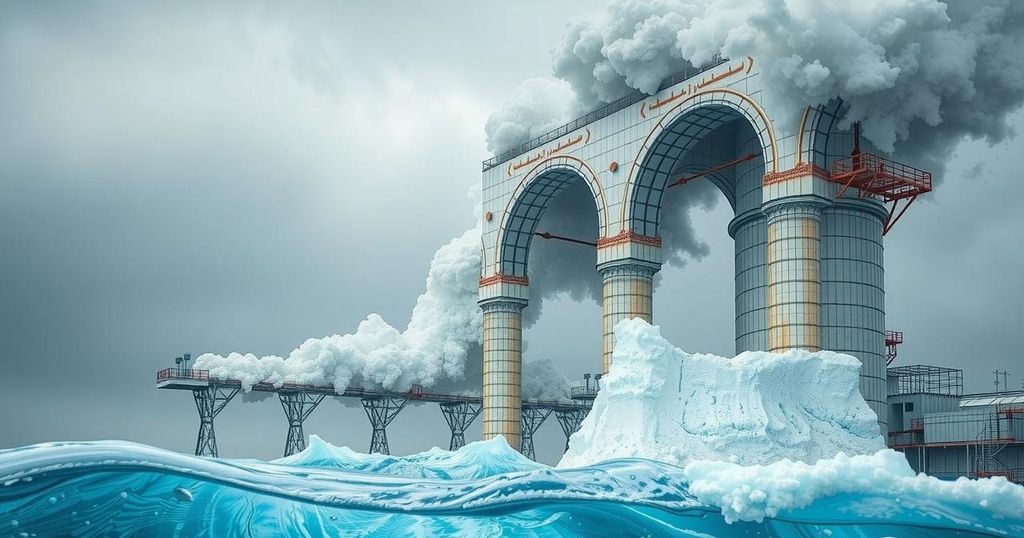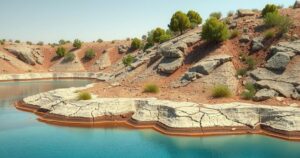Iran’s Energy Crisis: Struggles Amidst Sanctions and Climate Change

Iran is facing an alarming energy crisis, marked by widespread blackouts and fuel shortages, despite having substantial oil and gas reserves. This predicament is fueled by mismanagement, years of underinvestment, Western sanctions, and the effects of climate change, particularly in extreme winter conditions. The situation has dire implications for Iranian citizens’ daily lives and raises questions about the future of the country’s energy sector.
Iran, a nation endowed with extensive reserves of natural gas and oil, is currently facing a severe energy crisis that has plunged millions into darkness during an unforgiving winter. This situation reveals a troubling combination of ineffective governance, international sanctions, and the pressing realities of climate change. Despite holding the second-largest proven natural gas reserves and ranking fourth in crude oil reserves worldwide, Iran is beset by blackouts and fuel shortages, a stark contrast to its resource wealth.
Officials attribute the crisis to excessive energy consumption coupled with inadequate fuel supply. However, the roots of the problem run deeper, encompassing years of underinvestment in infrastructure, compounded by the weight of Western sanctions. President Masoud Pezeshkian’s recent comments regarding the fuel scarcity highlight the gravity of the situation, as widespread power outages grip Tehran and other provinces.
Currently, Iranians endure unheated residences and economic struggles amid one of the coldest winters experienced in years. To adapt, families are resorting to wearing multiple layers of clothing and remaining under blankets. Furthermore, businesses are suffering significant losses due to unanticipated and prolonged blackouts, while concerns about public safety are mounting as major roadways are left shrouded in darkness.
The energy crisis stems not only from administrative deficiencies but also from the dual pressures of climate change and sanctions. Severe winters and extremely high summer temperatures have intensified energy demands, while outdated infrastructure is unable to cope. Sanctions have significantly hindered Iran’s ability to modernize its power grid or to adopt cleaner fuel technologies. The environmental consequences are dire; with limited fuel options, power generation increasingly relies on burning mazut, a poor-quality oil that exacerbates Tehran’s notorious air pollution, leading to increased health risks and fatalities attributed to pollution.
As the power crisis unfolds, pressing questions emerge regarding Iran’s future. Will systemic reforms and sustainable energy investments suffice to reverse this negative trajectory? The experiences of Iran serve as a pivotal lesson for other nations in the Middle East, offering insights into how to fortify their energy systems against both climatic and geopolitical adversities.
The topic revolves around Iran’s current energy crisis, characterized by the paradox where vast reserves of natural resources coexist with significant power shortages and blackouts. The article presents a critical analysis of how years of mismanagement, exacerbated by international sanctions and the impacts of climate change, have led to an unsustainable energy situation. The situation has profound implications for daily life in Iran, affecting not only residential comfort but also economic activities and public health. Furthermore, the article explores the urgent need for reforms and investments aimed at creating a more resilient energy infrastructure.
In conclusion, Iran’s energy crisis exemplifies the consequences of mismanagement, international sanctions, and climate challenges interwoven. Despite its rich natural resource base, the ongoing blackouts and fuel shortages reflect deeper systemic issues that prevent adequate infrastructure development. The crisis poses critical questions about the nation’s energy future and emphasizes the necessity for reforms and investment in sustainable technologies. Other Middle Eastern nations may benefit from learning from Iran’s struggles, thereby enhancing their energy systems’ resilience against future challenges.
Original Source: scoopempire.com






